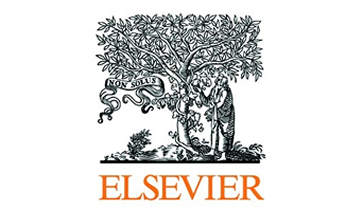 The role of CB1 in immune modulation by cannabinoids
The role of CB1 in immune modulation by cannabinoids
- Center for Integrative Toxicology, Department of Pharmacology and Toxicology, and Neuroscience Program, Michigan State University, 1129 Farm Lane, Room 313, East Lansing, MI, 48824-1630, United States
Purchase $35.95
Abstract
There is clear evidence that CB2, historically referred to as the peripheral cannabinoid receptor, mediates many of the immune modulatory effects of cannabinoids. However, cannabinoid receptors cannot be classified simply as central or peripheral since CB2 has been shown to play a role in the central nervous system (CNS) and CB1 mediates many immune system effects. Although Cnr1 mRNA and CB1 protein expression is lower than Cnr2 mRNA or CB2 protein expression in cells of the immune system, several studies have shown direct modulation of immune function via CB1 by endogenous and exogenous cannabinoids in T cells, innate cells, and to a lesser extent, B cells. In addition, indirect, but CB1-dependent, mechanisms of immune modulation exist. In fact, the mechanism by which cannabinoids attenuate neuroinflammation via CB1 is likely a combination of immune suppression and neuroprotection. Although many studies demonstrate that agonists for CB1 are immune suppressive and anti-inflammatory, CB1antagonists also exhibit anti-inflammatory properties. Overall, the data demonstrate that many of the immune modulatory effects of cannabinoids are mediated via CB1.
Abbreviations
- 2-AG, 2-arachidonyl-glycerol;
- ACEA, arachidonyl-2′-chlorethanylamide;
- ACPA,arachidonylcyclopropylamide;
- AEA, arachidonylethanolamide;
- AP-1, activator protein-1;
- APC, antigen presenting cell;
- CB1, cannabinoid receptor 1;
- CB2, cannabinoid receptor 2;
- CD, cluster of differentiation;
- CNS, central nervous system;
- Con A, Concanavalin A;
- Δ9-THC, Δ9-tetrahydrocannabinol;
- DC, dendritic cell;
- EAE, experimental allergic encephalomyelitis;
- HIV, human immunodeficiency virus;
- IFN, interferon;
- IL, interleukin;
- LPS, lipopolysaccharide;
- MHC, major histocompatibility complex;
- MS, multiple sclerosis;
- NFAT, nuclear factor of activated T cells;
- NFκB, nuclear factor κB;
- NT, neurotransmitter;
- MAEA, R-(+)-methanandamide;
- STAT, signal transducer and activator of transcription;
- TH, T helper cell
Keywords
- Cannabinoids;
- CB1 receptor;
- Immune modulation
Figures and tables from this article:
- Fig. 2. Future CB1 research needs. Future research needs include: (1) characterization of CB1 receptor expression on various immune cell types; (2) possible antigen-induced endocannabinoid production; (3) the role of CB1 in HIV; (4) the balance of CB1-mediated of neuroprotection versus immune suppression; (5) CB1 antagonist anti-inflammatory effects; and (6) characterization of non-CB1 effects for some CB1 ligands. Future needs 2 and 6 are depicted on the TH1 cell, but could conceivably occur on any cell type. Future need 5 depicts the macrophage as a prototypical inflammatory cell affected by CB1 antagonists. Endo, endocannabinoid; MG, microglial cell; Mac, macrophage; pDC, plasmacytoid DC; cDC, conventional DC; NT, neurotransmitter.





